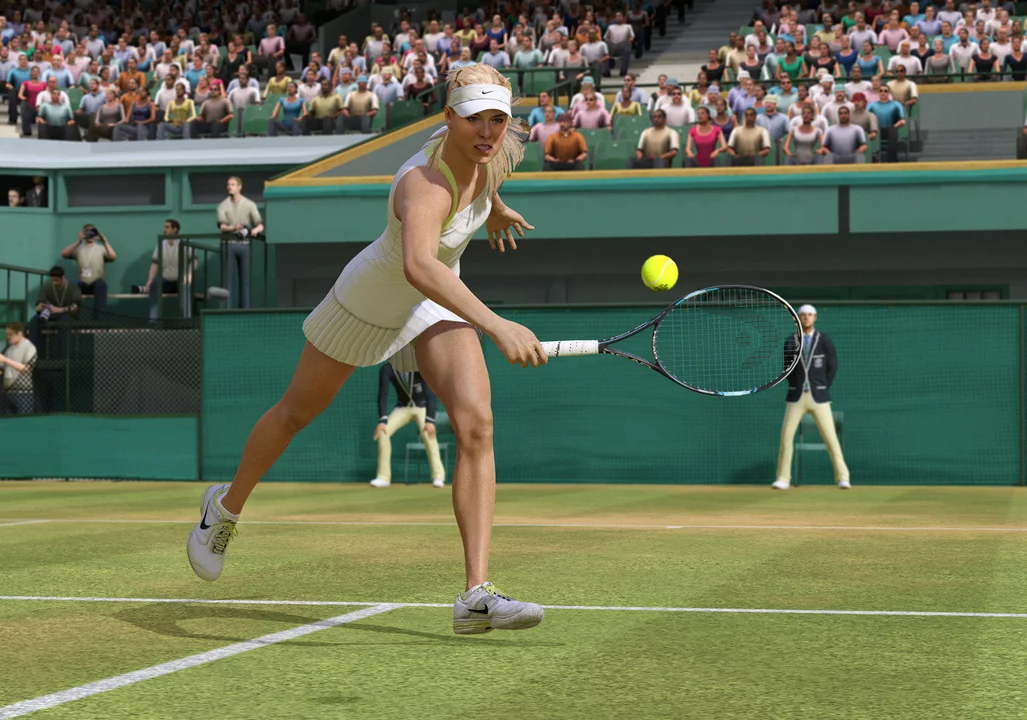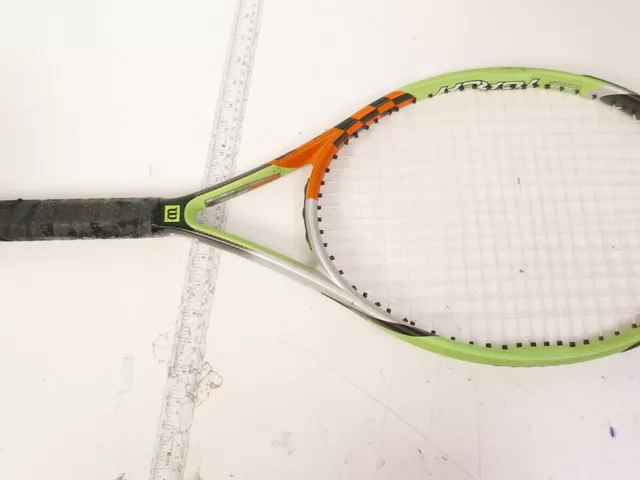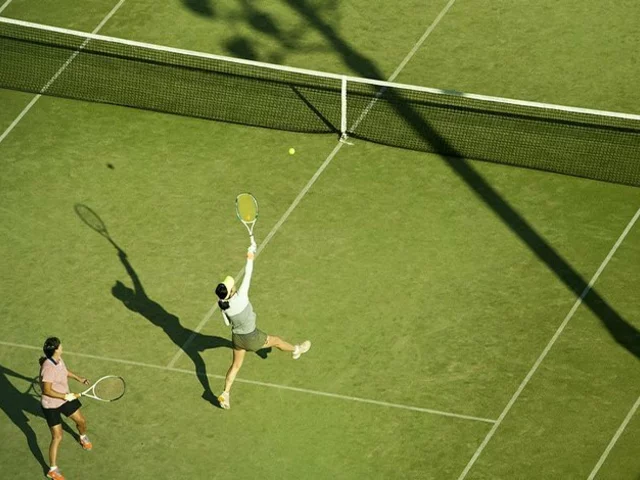
Why don't they use live Hawkeye in the Grand Slam finals?
Exploring the Pros and Cons of Implementing Live Hawkeye in Grand Slam Finals
Live Hawkeye has been used for some time in tennis tournaments and has become the de facto standard for determining whether a ball is in or out of the court. But it has yet to be implemented in the biggest tournaments of all – the Grand Slams. There are several pros and cons associated with the use of live Hawkeye in Grand Slam finals, and it is important to consider them as we explore the potential for its use.
Pros of Implementing Live Hawkeye in Grand Slam Finals
One of the main advantages of using live Hawkeye in Grand Slam finals is that it provides an accurate determination of whether a ball is in or out. This can be especially helpful in deciding close-call points, ensuring that the correct decision is made and that matches are not decided on incorrect calls. Additionally, Hawkeye can provide greater consistency across different courts and different officials, ensuring that the same decision is made regardless of who is officiating the match.
The use of Hawkeye can also increase the fairness of matches. This is because Hawkeye is not susceptible to human error or bias, allowing for a more even playing field. Furthermore, the use of Hawkeye can reduce the chances of cheating or gamesmanship, as it is almost impossible to manipulate the system.
Cons of Implementing Live Hawkeye in Grand Slam Finals
The main disadvantage of using Hawkeye in Grand Slam finals is that it can be expensive to install and maintain. Additionally, Hawkeye can be slow to respond, leading to delays in matches as decisions are made. Finally, the use of Hawkeye can be controversial, as some players and officials may not agree with its decisions.
Ultimately, the pros and cons of implementing live Hawkeye in Grand Slam finals must be considered carefully. While Hawkeye can provide accuracy and fairness, it can also be expensive and slow. If these factors can be balanced, then it is possible that the use of live Hawkeye in Grand Slam finals could be beneficial. However, until further research is conducted, the potential benefits and drawbacks of its implementation must remain unknown.
Examining the Controversy Surrounding the Absence of Live Hawkeye in Tennis Grand Slam Finals
Live Hawkeye is an advanced technology used in tennis that provides accurate data about the ball's trajectory, speed, and spin. It has been used in all professional tournaments since 2006, but not in Grand Slam finals. This has caused controversy among players, fans, and experts. The lack of its use in the biggest tennis tournaments has been seen as unfair by some.
When it comes to the Grand Slams, the absence of Live Hawkeye has been heavily criticized. The technology has become an essential part of the game and its accuracy is unparalleled. Some argue that it is essential for the fairness and accuracy of the game. The lack of Live Hawkeye in the Grand Slams has led to some controversial decisions, especially in cases where the ball was called out but the Hawkeye data showed it was in.
The main reason why Live Hawkeye is not used in the Grand Slams is due to its cost. It is a very expensive technology and it would require significant investment to install it in all the courts that host Grand Slams. Additionally, it is also a complex technology and installing it in all the courts would take a lot of time.
Another reason why Live Hawkeye is not used in the Grand Slams is because of the time it takes for the data to be processed. In professional tournaments, the data is processed quickly and within seconds the decision is made. However, in Grand Slams, the process takes much longer, as the data needs to be sent to a central location for processing. This means that the decision is not made as quickly as it would be with Live Hawkeye.
Finally, some have argued that Live Hawkeye does not add much to the game, as the decisions made by the umpires and linespeople are usually accurate. This is true to some extent, but even the best umpires and linespeople can make mistakes and Live Hawkeye can help reduce these mistakes.
In conclusion, there is a lot of controversy surrounding the absence of Live Hawkeye in the Grand Slams. The main reason why it is not used is due to its cost, the time it takes for the data to be processed, and the fact that some believe it does not add much to the game. Despite this, Live Hawkeye is an essential part of the game and its use in the Grand Slams should be considered.
Analyzing the Impact of Not Using Live Hawkeye in Grand Slam Finals
The Grand Slams are the pinnacle of the tennis world, and the drama of the finals makes them the most exciting event in the sport. However, there is one aspect of the game that has been missing – the use of live Hawkeye technology. Hawkeye is a computer system that uses cameras to track the ball and provide instant replays of disputed calls, which has been used in most other ATP and WTA tournaments. But why isn’t it used in Grand Slam finals?
The main reason for this is cost. Hawkeye is expensive to install and maintain, and the Grand Slams are run by non-profit organizations with limited budgets. While some of the other tournaments have sponsors who can afford the cost, the Grand Slams are not sponsored and therefore cannot justify the expense. Additionally, the size and scale of the Grand Slam tournaments make it difficult to install the system in a timely manner.
The lack of Hawkeye also has an impact on the fairness of the game. Without it, players have no way of seeing if their opponent’s shots are in or out. This can lead to controversy and disputes, which can take away from the enjoyment of the sport. Additionally, players may be less likely to challenge a call if they are not sure whether their shot was good or not.
Finally, the lack of Hawkeye also affects the level of play in the Grand Slam finals. Without the technology, players are less likely to take risks and go for shots they are not sure of, which can lead to a more conservative and less exciting game. Without Hawkeye, the Grand Slams are missing out on an important part of the modern game.
In conclusion, the lack of Hawkeye in Grand Slam finals has an impact on the fairness of the game, the level of play, and the overall enjoyment of the sport. It is an important technology that should be implemented in the Grand Slams, and the cost should be covered by sponsors or by the tournaments themselves. Hawkeye could make the Grand Slams even more exciting and competitive, and it is an essential part of modern tennis.
Understanding the Reasons Why Live Hawkeye is Not Used in Grand Slam Finals
Hawkeye is a technology used in tennis to help the umpire call a line call. It uses multiple cameras to digitally track the ball and generate a 3D representation of its trajectory. Hawkeye is used in many tennis tournaments, but why is it not used in the Grand Slam finals?
The main reason why Hawkeye is not used in Grand Slam finals is that it is not 100% reliable. Although Hawkeye is generally accurate, it can sometimes make mistakes or misinterpret the trajectory of the ball. This is why the Grand Slam tournaments prefer to use line judges instead.
Another reason why Hawkeye is not used in Grand Slam finals is that it is an expensive technology. Hawkeye must be rented for tournaments and can cost up to several thousand dollars. In addition, it requires a number of cameras, technicians, and other equipment which adds to the cost. For this reason, the Grand Slam tournaments prefer to rely on line judges which are much cheaper.
Finally, Hawkeye is not used in Grand Slam finals because it does not fit with the traditional nature of the game. Tennis is a sport with a long history and a very specific set of rules. By using Hawkeye, the game would be changed drastically and the traditional nature of the game would be lost. Therefore, the Grand Slam tournaments prefer to rely on line judges to ensure that the game remains unchanged.
While Hawkeye is a useful technology, it is not used in Grand Slam finals due to its lack of reliability, its cost, and its effect on the traditional nature of the game. Therefore, it is likely that the Grand Slam tournaments will continue to rely on line judges instead of Hawkeye in the future.




Written by Griffin Callahan
Hi, I'm Griffin Callahan, a sports enthusiast with a particular expertise in tennis. I've dedicated years to studying the game, both as a player and an analyst. My passion for tennis has led me to write extensively about the sport, covering everything from player profiles to match analyses. I love sharing my knowledge and insights with fellow tennis fans, and I'm always eager to engage in discussions about the sport we all love.
All posts: Griffin Callahan